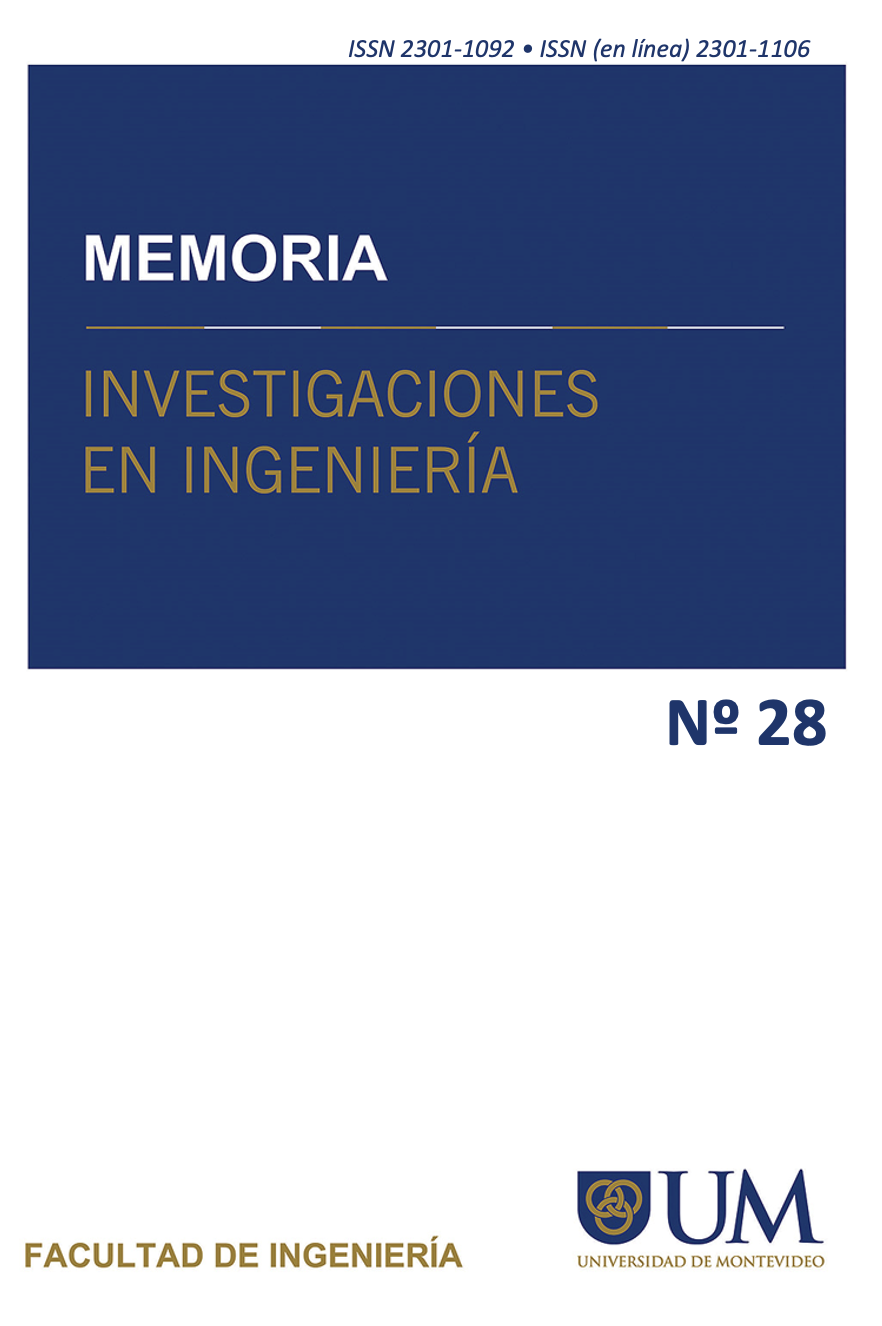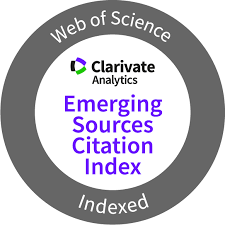Auxílio de mobilidade aprimorado para deficientes visuais
um sensor ultrassônico e uma bengala inteligente baseada em Arduino
DOI:
https://doi.org/10.36561/ING.28.3Palavras-chave:
Sensor ultrassónico, microcontrolador Arduino ATmega328, ajuda à mobilidade, pessoa com deficiência visual, Sistema de alarmeResumo
Este estudo apresenta uma bengala inteligente para cegos e com deficiência visual que utiliza sensores ultrassónicos com Arduino e Raspberry Pi. A Organização Mundial de Saúde estima que 37 milhões de pessoas em todo o mundo são cegas. As pessoas cegas ou com deficiência visual dependem frequentemente da assistência de fontes externas, que pode surgir sob a forma de seres humanos, cães treinados ou dispositivos tecnológicos especializados que desempenham o papel de sistemas de apoio à tomada de decisões. Fomos então inspirados a criar uma bengala inteligente para contornar estas restrições. Para tal, equipámos o stick com sensores ultrassónicos em locais estratégicos que ativavam o som da campainha e davam ao utilizador informações sobre o meio envolvente. A nossa proposta foi um dispositivo leve e de baixo custo que utiliza um microcontrolador para interpretar sinais e emitir sinais sonoros para avisar o deficiente visual de qualquer obstáculo, água ou local escuro. O sistema é constituído por sensores de deteção de obstáculos e humidade que recebem, processam e enviam sinais para o sistema de alarme, que avisa o utilizador para agir. O sistema foi concebido e programado em C, testado quanto à sua precisão e verificado por um deficiente visual. A nossa tecnologia pode identificar obstruções a cerca de 2 metros do utilizador.
Downloads
Referências
M. S. Nowak and J. Smigielski, “The Prevalence and Causes of Visual Impairment and Blindness among Older Adults in the City of Lodz, Poland.” Medicine, vol 94, number 5, pp. e505, February 2015 doi:10.1097/MD.0000000000000505
G. Gayathri, M. Vishnupriya, R. Nandhini and M. Banupriya “Smart Walking Stick for Visually Impaired.” International Journal of Engineering and Computer Science, vol. 3, number 3, pp. 4057-4061, 2014.
R. Radhika, P.G. Pai, S. Rakshitha and R. Srinath “Implementation of Smart Stick for Obstacle Detection and Navigation.” International Journal of Latest Research in Engineering and Technology, vol. 2, number 5, pp. 45-50, 2016.
M.H. Mahmud, R. Saha and S. Islam “Smart Walking Stick – An Electronic Approach to Assist Visually Disabled Persons.” International Journal of Scientific and Engineering Research, vol. 4, number 10, pp. 111-114, 2013.
A. Jose, G. George, M.R. Nair, M. J. Shilpa and M. B. Mathai “Voice Enabled Smart Walking Stick for Visually Impaired.” International Journal of Advanced Research in Electrical, Electronics and Instrumentation Engineering, vol. 5, pp. 80-85, 2016.
R. Sheth, S. Rajandekar, S. Laddha and R. Chaudhari “Smart White Cane – An Elegant and Economic Walking Aid.” American Journal of Engineering Research. Vol. 3, number 10, pp. 84-89, 2014.
C.S. Kher, Y.A. Dabhade, S.K Kadam., S.D. Dhamdhere and A.V. Deshpande “An Intelligent Walking Stick for the Blind.” International Journal of Engineering Research and General Science, vol. 3, number 1, pp. 1057-1062, 2015.
B.G. Roopashree, B.S. Patil and B.R. Shruthi “Smart Electronic Stick for Visually Impaired.” International Journal of Innovative Research in Science, Engineering and Technology, vol. 4, number 7, pp. 6389-6395, 2015.
O. O. Olakanmi, “A Multidimensional Walking Aid for Visually Impaired Using Ultrasonic Sensors Network with Voice Guidance", International Journal of Intelligent Systems and Applications (IJISA), vol. 6, number 8, pp. 53-59, 2014. DOI: 10.5815/ijisa.2014.08.06
E. J. Chukwunazo and G. M. Onengiye “Design and Implementation of Microcontroller Based Mobility Aid for Visually Impaired People.” International Journal of Science and Research. Vol. 5, issue 6, pp. 680-686, 2015. Available at http://dx.doi.org/10.21275/v5i6.NOV164233.
G. Prasanthi and P. Tejaswitha “Sensor Assisted Stick for the Blind People.” Transactions on Engineering and Sciences, vol. 3, number 1, pp. 12-16, 2015.
Shahid Karim, Muhammad Shakir, Ali Sheikh, Shahzor Memon, Halar Mustafa, Vishal Kumar “A Novel Eye-Tracking Device Designed with a Head Gesture Control Modul” Big Data fusion and Intelligent Information Integration, October 2021
Muhammad Shakir, Shahid Karim, Muhammad Imran Saeed, Halar Mustafa, Shahzor Memon, S. Abbad Kazmi “IOT Based Real-time clinical healthcare system for aging and unprivileged areas” Int. J. Computational vision and robotics, January 2022
Wasiq Khan, Abir Hussain, Bilal Muhammad Khan, Keeley Crockett, “Outdoor mobility aid for people with visual impairment: Obstacle detection and responsive framework for the scene perception during the outdoor mobility of people with visual impairment”, Expert Systems with Applications, Volume 228, 2023, 120464, ISSN 0957-4174, https://doi.org/10.1016/j.eswa.2023.120464.
Cardona Mesa AA, Vasquez Salazar RD. “Mobility aids for visually impaired persons: Journals reviewed. Wearable Technology” 2021; 2(1): 73–81.
Ricardo Yauri, Kevin Alvarez, Junior Cotaquispe, Jordy Ynquilla, Oscar Llerena “Guidance device for visually impaired people based on ultrasonic signals and open hardware” International Journal of Reconfigurable and Embedded Systems (IJRES)Vol. 13, No. 3, November 2024, pp. 520~527 ISSN: 2089-4864, DOI: 10.11591/ijres.v13.i3.pp520-527.
Arshad, Khan., Gerard, Deepak. (2024). Voice-Based Navigation System for Visually Impaired Using Ultrasonic and Moisture Sensor via Bluetooth and GPS Tracker. Deleted Journal, 2(1):20-28. doi: 10.48001/jocevd.2024.2120-28.
J, S, Raghul., Durga, Devi, K., M., Sreya., S, Maithreye. (2024). Mobility Stick with Haptic Feedback for People with Vision Impairments. 1-6. doi: 10.1109/iconscept61884.2024.10627855.
A, Harini., C, Buvana., M, Harshini., S., Keerthana., Dr.Ramkumar, prabhu., S., K., UmaMaheswaran. (2024). Iot Based Smart Assistant Cane For The Visually Impaired. doi: 10.1109/ic3iot60841.2024.10550222.
Publicado
Como Citar
Edição
Seção
Licença

Este trabalho está licenciado sob uma licença Creative Commons Attribution 4.0 International License.






















